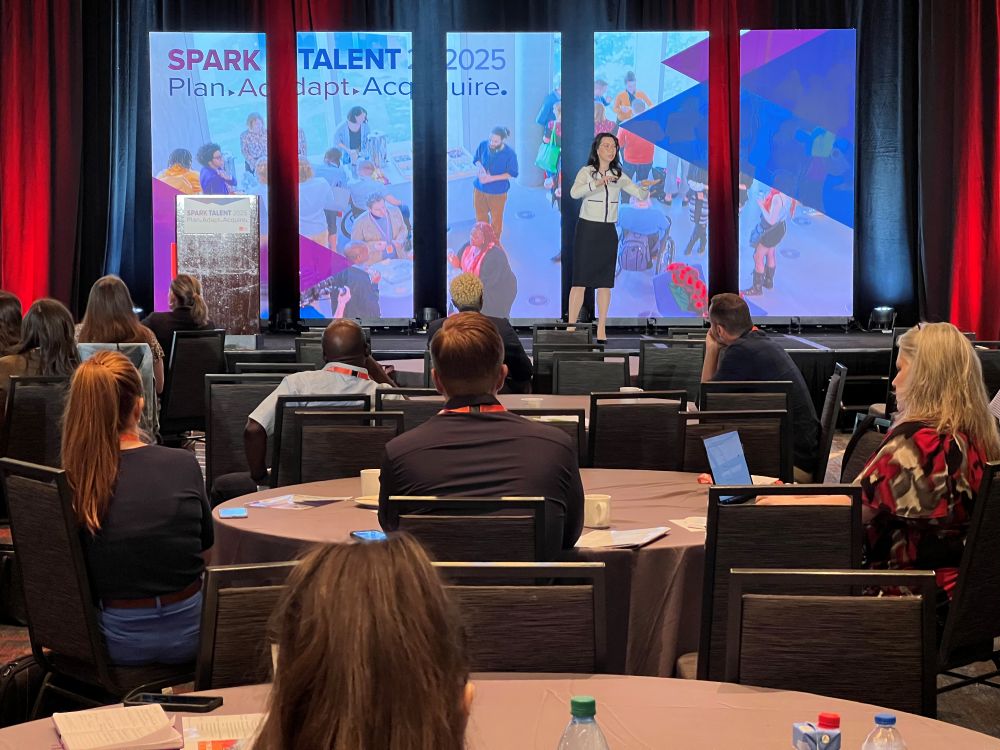At SPARK TALENT, Sue Lam, VP of Global People Analytics at The Coca-Cola Company (TCCC), laid out the strategy for HR to shift from a fragmented, reactive function to a strategic business driver. She shared how TCCC transformed from 32 fragmented business units into a “networked organization.” The key was simple: HR dropped the reactive support role and built a people strategy that directly drives business goals, all enforced by a clear operating structure.
Here are three actionable steps to make that shift in your own organization.

1. Build Strategy from the Business Outward, Not Inward
Your people strategy can’t be an internal exercise. It must be a direct engine for future business success, predicting talent needs years ahead.
- Actionable Solution: Conduct “Future-Back” Trend Analysis. Stop focusing only on next year’s budget. Form a “tiger team” (a small group on a stretch assignment) to research major global and industry trends. This analysis helps HR develop a strategy that is “future-back, present-forward.”
- Lam’s Example: Recognizing the consumer trend toward healthy but tasty beverages, TCCC knew in order to achieve this goal, they would need to strategically recruit food scientists with nutrition backgrounds, linking a talent gap directly to a product innovation goal.
- Actionable Solution: Prioritize Business Acumen. The success of your plan rests on your HR Business Partners knowing the business “really well,” Lam emphasized, noting this as the “most important thing” for success. A successful people strategy is one that the business is willing to adopt as its own.
2. Enforce Strategy with Clear Structure
Strategy is meaningless without disciplined execution. Lam learned that without clear “rules for engagement and guardrails,” decentralized groups will create “10,000 ways to get to that end spot,” resulting in duplicated work and wasted resources.
- Actionable Solution: Institute a “One Backlog” System. Create a single, central list of all strategic HR projects. This is the ultimate clarity tool: projects that don’t appear in the “one backlog will not be considered for funding,” Lam noted This enforces prioritization against the core people strategy.
- Actionable Solution: Clarify Roles for Every Step. In your strategic planning process, you must explicitly define accountability. Use clear markers to communicate when a group’s role is to Listen (receive information), Participate (provide input), or Lead (own the execution).
3. Measure Behavioral Change to Prove Impact
The true ROI of a new people strategy is not just cost savings, but a measurable increase in employee trust, clarity, and engagement. These metrics show that the culture and internal politics has been successfully addressed, according to Lam.
- Actionable Solution: Track Metrics of Trust and Fairness. Lam noted TCCC’s biggest change was a 14% increase in employees believing that procedures used to allocate resources and make decisions are fair. This metric proves the new structure is transparent and reliable.
- Actionable Solution: Track Strategic Clarity. Measure if your team understands the mission. TCCC saw a 5% increase in employees seeing a clear link between their daily work and the company’s objectives, validating that the new strategy had successfully unified the organization.
Final Learning: HR must proactively allow time to work through internal politics and behavioral change. Lam concluded that the process proved that HR work isn’t done within the organizational boxes; “it’s about the mortar of how things get done.”
